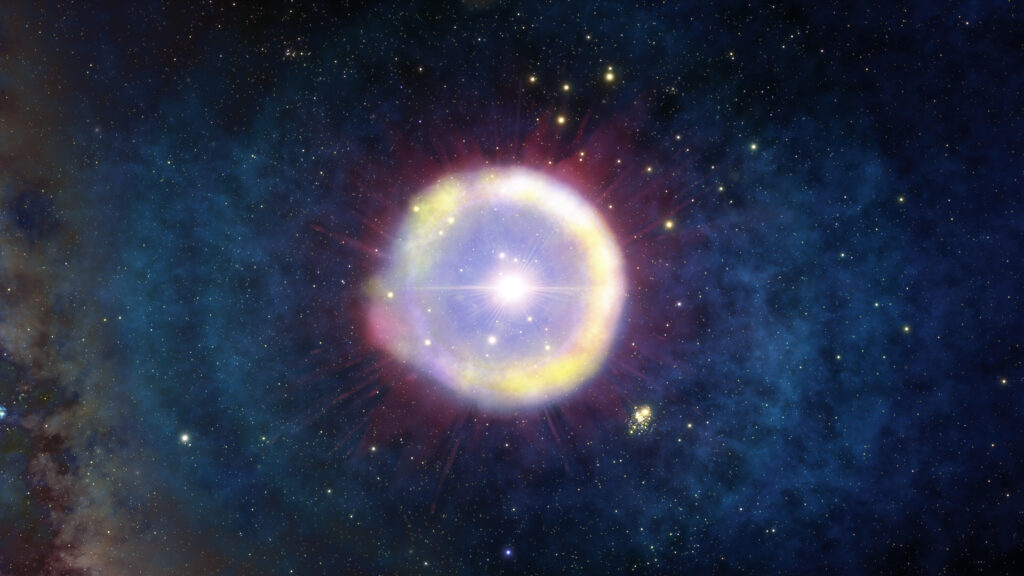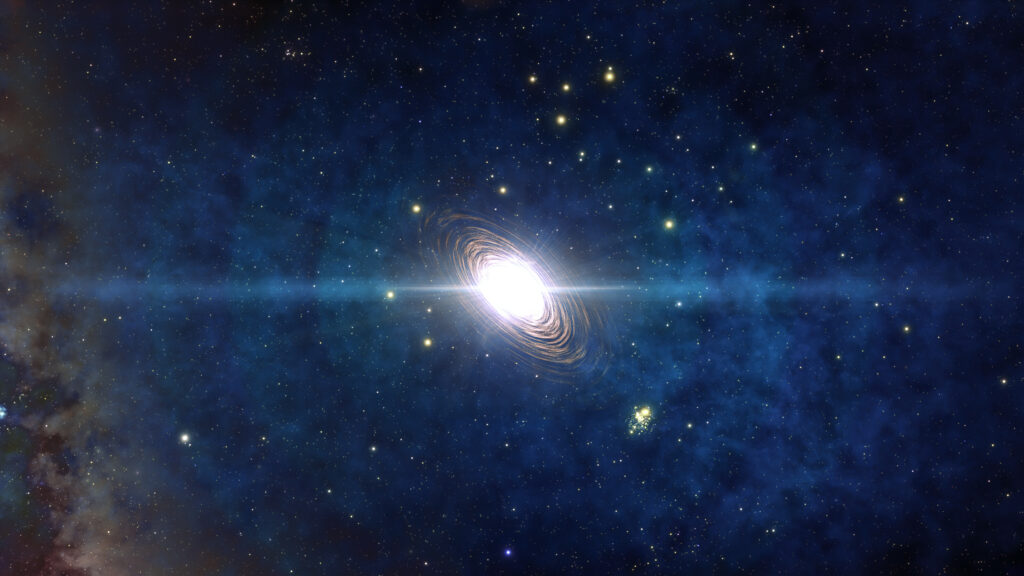Thanks to the Gemini North telescope, astronomers have discovered an unusual ratio of chemical elements in the clouds surrounding the ancient quasar. According to the researchers, these are the remains of one of the first-generation stars that formed shortly after the Big Bang.

To date, the title of the most massive star in the universe belongs to the blue hypergiant R136a1. Its mass lies in the range from 170 to 230 solar. But this is nothing compared to the early stars formed from primary matter immediately after the Big Bang. It is believed that their masses exceeded the mass of our Sun in the range from 100 to 1000 times.
These luminaries disappeared long ago, ceasing to exist in the blinding flashes of supernovae. But they left an important legacy. Their substance enriched the universe with heavy elements, providing the possibility of the formation of stone planets, which in turn created the foundation for the formation of our Earth. It is not surprising that astronomers are making considerable efforts to learn as much as possible about the stars of the first generation — because without them, humanity simply would not exist. And recently they finally managed to find traces of one of these luminaries.
The discovery was made thanks to the 8.1- meter Gemini North telescope. We see it as it was 13.1 billion years ago, when the age of the universe was only 700 million years. During the analysis of the clouds surrounding the quasar, Gemini North found an abnormally high iron content relative to magnesium. According to scientists, it can only be explained by the consequences of the explosion of a pair-instability supernova.

The peculiarity of a pair-instability supernova is that the star explodes, leaving behind neither a neutron star nor a black hole, throwing all its matter into space. At the same time, such a scenario is possible only for exceptionally massive luminaries which mass is 150 – 250 times greater than the solar one. Given the age of the quasar, it is very likely that the chemical elements observed in its vicinity remained after the death of one of the giant stars of the first generation.
According to https://noirlab.edu
Follow us on Twitter to get the most interesting space news in time
https://twitter.com/ust_magazine

